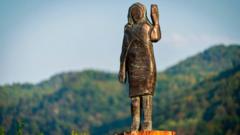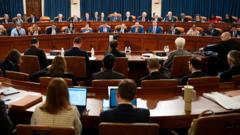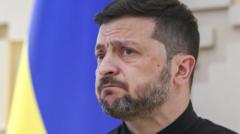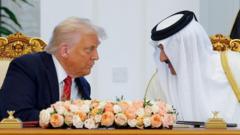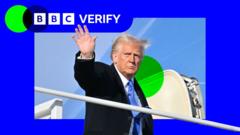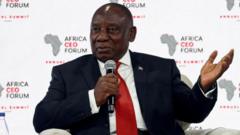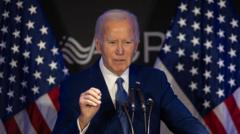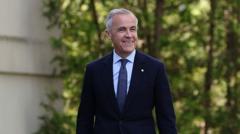The iconic presidential jet may soon undergo significant changes as former President Trump considers a Qatari proposal for a new aircraft, prompting questions about the interior and future of Air Force One.
A New Chapter Awaits Air Force One Amid Qatari Proposal: What Lies Within?
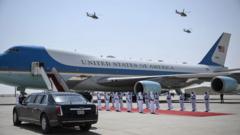
A New Chapter Awaits Air Force One Amid Qatari Proposal: What Lies Within?
An inside look at Air Force One's journey and a potential redesign following Qatar's lavish offer.
Most journalists accompanying the U.S. president rarely catch a glimpse of the luxurious interior of Air Force One. The media cabin is located at the rear of the aircraft, accessible only through a side door and up a few steps—just a quick detour away from the presidential suite. Gaining access to this coveted area requires navigating through security provided by armed Secret Service agents.
During the recent Middle East trip led by Donald Trump, notable media figures, including Fox News host Sean Hannity, enjoyed priority seating and direct access to the president for in-flight interviews. Meanwhile, journalists in the press pool remained relegated to their compact section of the aircraft.
Despite limited views, flying on Air Force One is far from a rough experience. The press cabin has 14 comfortable seats, reminiscent of first-class domestic travel. Amenities include a restroom, a snack table boasting exclusive Air Force One-branded treats, and two television monitors that broadcast the president's favored news channel—CNN during the Biden administration, and Fox News when Trump is at the helm. For extensive flights, passengers are treated to plated meals from the on-board kitchen, with the president following a separate gourmet menu.
However, the famed aircraft may soon experience a dramatic facelift should Trump decide to accept Qatar's generous offer of a new "palace in the sky." This potential foreign gift could become the largest ever presented to a U.S. president.
While “Air Force One” technically refers to any Air Force plane carrying the president, the iconic 747-200b with its striking blue and white livery is the aircraft most commonly associated with this designation. Designed by Jackie Kennedy in 1962, the aircraft fleet, currently made up of two 747s operational since 1990, reflects outdated technology—a reality that frustrates the current president, who previously owned his own airline.
During an industry-related address in Abu Dhabi, Trump lamented about flying in a 42-year-old Boeing, insisting new aircraft are in development. He previously introduced plans for an upgraded model during his first term, selecting his personal color scheme, moving away from Kennedy’s aesthetic. However, delivery has faced numerous delays and cost overruns, pushing the expected arrival of the two new planes beyond 2021.
Now, Qatar's recent offer of a lavishly outfitted $400 million 747-8 provides a seemingly timely solution to Trump’s transport challenges. This offer, reportedly in the works for months, raises various legal and ethical concerns regarding acceptance by the president. Transforming a foreign aircraft for American presidential use also presents significant technical hurdles, including retrofitting for advanced communication and security systems, as current models are designed to withstand the impact of a nuclear pulse.
Aviation analysts suggest such modifications might extend the refitting process to at least 2030. Given that many components will likely require detailed examination and upgrading, the endeavor could cost upwards of $1 billion. However, experts suggest that Trump might have the power to waive some security obligations as president.
Regardless of its future, the eventual retirement of the current 747s will mark the end of a crucial chapter in American history, as these aircraft have hosted numerous presidents and pivotal national moments. From conveying leaders to monumental events to serving as a backdrop for political campaigns, Air Force One remains an enduring symbol of presidential authority and capability. Even in its current aging state, it embodies the essence of leadership—“not made for luxury,” but rather designed as a mobile command center for decisive action.




